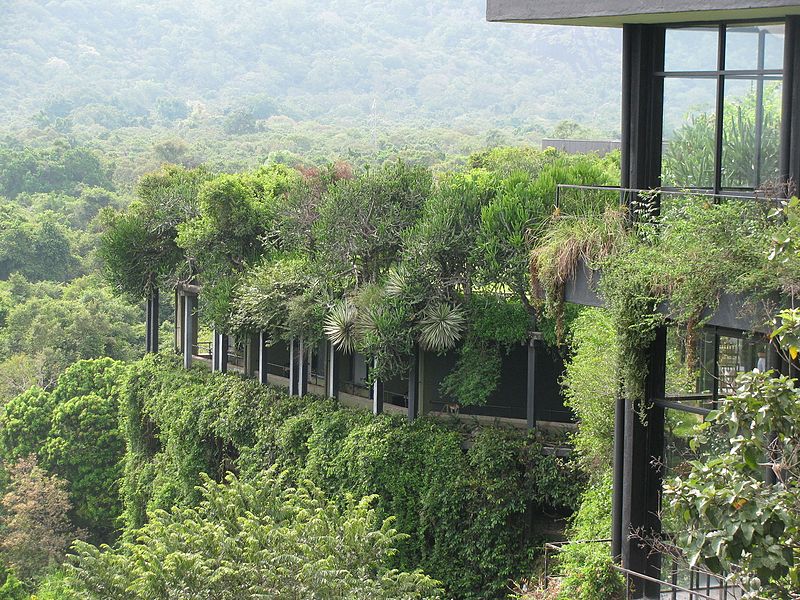
Image source: Wikimedia Commons
Today I am showcasing the late, great Sri Lankan architect Geoffrey Bawa who I discovered on a holiday to Sri Lanka. This fascinating character actually started his career as a lawyer and came to the occupation late in life, but he soon made up for it with his luxury interior designs.
Bawa is the man responsible for some of Sri Lanka’s most iconic buildings. He designed the Parliament building, the Heritance Kandalama and his own remarkable wilderness, Lunuganga where he began to experiment with merging inside and outside design.
Bawa was of mixed Sri Lankan and European descent and utterly addicted to travel. He explored the architectural history of Sri Lanka and it is said that his unique style could be explained by his diverse background. He had the inimitable ability to fuse elements of the traditional designs of his home with the wonders he saw around the world.
Vernacular Architecture
Bawa was the pioneer of vernacular architecture; he was doing it before it had been even given such a name. His luxury interior designs met local needs and made use of local construction materials to reflect cultural traditions. He loved to mix the indoors with the outdoors, breaking down the conventional barriers of separating the two.
When he visualized the luxury interior design of Kandalama, he hoped that one-day the hotel would emerge from a canopy of vegetation. It was only 10 years after Bawa said this, and sadly after his death, that the staff at the hotel could finally experience his vision.
Bawa’s most prolific project was the designing of the Sri Lankan parliament. He chose to place the building on an island in a newly formed lake. The building’s great size would be balanced by tilted roofs and surrounding gardens, which could host visitors. He wanted to create something that visually represented Sri Lanka’s checkered past whilst representing a new beginning of democracy in the country.
Geoffrey Bawa’s Lunuganga
Bawa spent 40 years on his own personal project. Lunuganga was a rubber estate in which he experimented with merging inside and outside space. The time, work and money Bawa put into his garden yielded great results. He inspired similar designs all over the world, and the beautiful space continues to be maintained and open to the public to this day.
Bawa forged the way for vernacular architecture in South East Asia and today his work can be seen all over the world.



